Common Items & Tools Used In Wicca & Witchcraft
Greetings and welcome to the 2nd part of our 'Brief Introduction To Witchcraft', where you'll expand your knowledge of witchy things even further by learning about the most common items and tools that experienced witches use, in order to cast their spells and make them more effective.
If you aren't already familiar with the basics of witchcraft then please
Go Back To The Basics Of Wicca & Witchcraft
For Future Updates, Free Downloads Plus More From M.a.R.S (Meditation and Relaxation Station)
Please Like our Facebook page by clicking the box below now!
Charms, Chants and Chalices
The A-Z of Witchcraft Items & Tools
There are certain items that good spell makers need in order to channel energies more effectively, and achieve greater chance of success when casting spells.
The following list covers most of them, but those of you who are just starting your journey of witchcraft don’t have to rush out and get them all at once.
You can always improvise, just as long as everything that's used is properly consecrated, the spells you cast won't be any less effective.
An altar is simply a special area that's used for spell casting.
They may be ornately carved, beautifully crafted works of art.....or just a simple, consecrated tabletop on which you work when preparing spells.
Altars are central to Wiccan ritual, and many non-Wiccan spell casters use them, too.
The shape and location are irrelevant – they can be round or square, indoors or outdoors. It's up to you to decide.
All a spell caster has to do to create an altar is ritually cleanse and consecrate it in exactly the same way as the other tools. That done, the altar is created.
Many spell makers like to have a variety of different coloured altar cloths so that they can be varied in accordance with the phase of the moon.
Others make do with just the one, which they decorate with suitably coloured crystals, flowers and the other appropriate objects.
Altars are usually candlelit, and decorated with incense, an essential oil burner and many of the other things that are commonly used in making magic....which we'll discuss in more detail further on.
Amulets are used to protect the spell caster from any evil influences that may be about.
According to Pliny, the 1st-century Roman author, an amulet is ‘an object that protects a person from trouble’.
They can be man-made, such as a horseshoe or a piece of jewellery decorated with a precious stone or made from a metal that corresponds to the wearer’s astrological sign, or naturally occurring, such as a rabbit’s foot, a seashell or a stone, again with astrological correspondences to the wearer.
Natural amulets, a gift from Mother Nature to those who believe in their power include trees, plants, flowers, herbs, vegetables, stones (mundane, semi-precious and precious) – indeed anything that the
wearer believes to be ‘lucky’.
The athame is a double-edged ritual knife, about six inches long. It is usually blunt because the only thing it is used to cut is energy.
Wiccans and other spell weavers use the athame to direct energy and to open and close the doorway to the spell caster's circle.
If there is no athame, a sword, or a wand, a branch cut very gently from a tree and suitably consecrated, can be used in its place.
Baskets are used for keeping together, and for carrying into the circle, many of the things needed in spell making.
Bath salts and oils are usually added to a ritual bath, taken before starting to weave spells,
to put the spell caster in a suitably relaxed frame of mind.
A bell is often rung at the beginning of a ritual when calling the four quarters and at the end to tell the elements to return to their realms, after they have been thanked for their attendance at the ritual.
The boline is the knife traditionally used by witches. It normally has a white handle and a curved blade. It is used to cut plants and herbs, wands and the other things that need to be cut as part of making magic.
Please Note:
When something has to be cut from a living plant it should be done very gently.
Some people like to ask the plant’s permission before cutting and thank it for its generosity afterwards.
The Book of Shadows, also know as a grimoire, is the journal in which witches keep a record of the spells they cast, the chants and invocations they use, the dreams they dream and other matters that are pertinent to their personal magic making.
Bowls are very necessary items in the witch’s cupboard. One is used to keep salt and another for water, but the efficient witch usually has several more to hand just in case.
Broomsticks are usually the first thing that people think of when the word ‘witch’ is mentioned – and it's hard to stop the mental picture of a black-robed crone zooming across the night sky coming to mind.
Broomsticks are traditionally known as besoms in the world of witchcraft, and are much more than a fantasy mode of transport; they are used to sweep out negative influences from the area before casting spells.
(Read More On Consecration Here)
A burin is a sharp-pointed instrument for inscribing candles and other magical objects and is often more practical than a boline, especially when inscribing candles.
Candles are absolutely essential. They are used in literally thousands of spells. Efficient Spell-Casters ensure that they have a large store of them in all sizes and appropriate colours.
Before they are used in magic making rituals, candles are often ‘dressed’ with essential oils and loaded with herbs to make them more powerful.
Cauldrons, like broomsticks, are another thing that comes to mind on hearing the word ‘witch’.
They are used to mix lotions and potions and any suitable, heatproof vessel will do as long as it has been properly consecrated.
Chalices are used for drinking consecrated liquids during magic making, especially when more than one spell caster is present.
Some people use elaborate, metal ones studded with semi-precious stones; others enjoy the simplicity of crystal or glass. It's simply a matter of personal choice.
Compasses are used by practical witches to establish north, south, east and west – essential in traditional magic making if they are weaving their spells in unfamiliar territory!
Cords are used to create magic circles in which to weave spells, and also in spells that are cast to create binding magic.
Crystals are used for the power they add to a spell and also for altar decoration.
Every spell caster has his or her favourite one, which they know from experience works for them. Each crystal has its own power. It’s a matter of finding out what works best for the individual.
Essential oils are commonly used in spells on their own, to dress candles or are added to incense which is to be burned in the censer. Essential oils are powerful and should never be swallowed or, with one exception, rubbed directly on to the skin unless diluted in a suitable carrier oil such as almond.
The exception is lavender, which is one of the most popular and is often drizzled into a ritual bath to add fragrance to the warm water.
Please Note:
Pregnant women should be especially careful when using essential oils: some can cause adverse reactions that can affect the unborn child.
Herbs are widely used when making magic. They can be easily obtained from shops and markets and many are just as easily grown in a garden or window box.
Not only is this cheaper but when they are growing their pleasing smell wafts into the house when the wind is blowing in the right direction.
Herbs can be used to anoint candles for candle magic and other spells, and make wonderful charms when carried in a handbag or wrapped in a piece of natural cloth and kept in a pocket.
Incense is used in either powder, cone or stick form to represent the element of air.
Traditionally it should be placed and burned on the east end of the witch’s altar.
(Read More On Consecration Here)
Pens are used for entering items in the Book of Shadows. Like everything else used in making magic, the spell should be consecrated before use.
Some spell makers prefer a quill pen as they give a continuance of tradition from the days before fountain, ballpoint and
felt-tip pens were invented.
The pentagram, a five-pointed star, the sides of which are interwoven with one another, can be drawn without lifting pen from paper.
A pentacle is a pentagram with a circle drawn round it. Both can be either physical, made of wood, metal, stone or clay, or imaginary.
An object with an abstract pentacle or pentagram woven over it, or a physical one
placed on it is protected against evil.
The top point of the star represents the spirit, and is often coloured white or purple.
Moving round clockwise, the next point represents air, which is associated with the colour yellow. Next comes earth, usually coloured green. Moving round, fire, coloured red in multicoloured pentagrams, is next. And lastly comes water, associated with the colour blue.
Talismans have long been confused with amulets, but there are distinct differences between the two.
Talismans are used as magical charms to attract wealth, happiness and harmony, whereas amulets repel evil and protect those whom their power is directed from.
Also, talismans are prepared for a special reason while amulets serve a general purpose.
Lastly, talismans are endowed with supernatural power. Like amulets, talismans can be worn as jewellery, carried in bags and used in rituals to encourage spells to work.
A wand is to spell making as an egg is to an omelette, that is to say absolutely essential.
It is used to draw magical symbols on the ground or in the air, to direct energy and call upon the power of The Lady.
It can be made of crystal or cut, lovingly, from a tree. Some spell casters decorate their wands with signs of the rune, others insert a crystal into the point.
That concludes our brief introduction to the Items and Tools used by witches.
Thank you for taking the time to read it all.
In the next section we're going to delve deep into the heart of the beliefs and values of modern day witches, as well as introduce you to some beginner spells to get you started on your journey to becoming a fully fledged witch.
For Future Updates, Free Downloads and more from M.a.R.S
(Meditation and Relaxation Station)
Please Like our Facebook page by clicking the box below now!
Read on to expand your knowledge of witchcraft even further by reading about the principles,beliefs and values of modern day witches, as well as get access to your Free Beginner Spell.
View Now

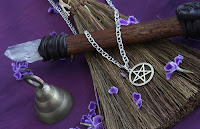







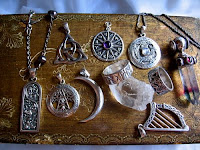



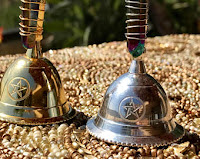

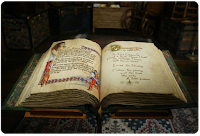










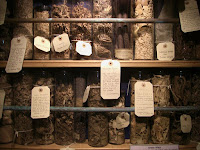


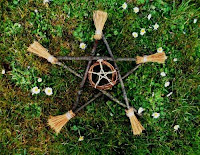

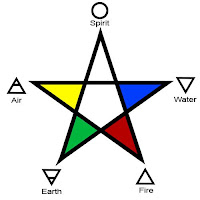




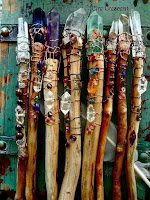
No comments:
Post a Comment